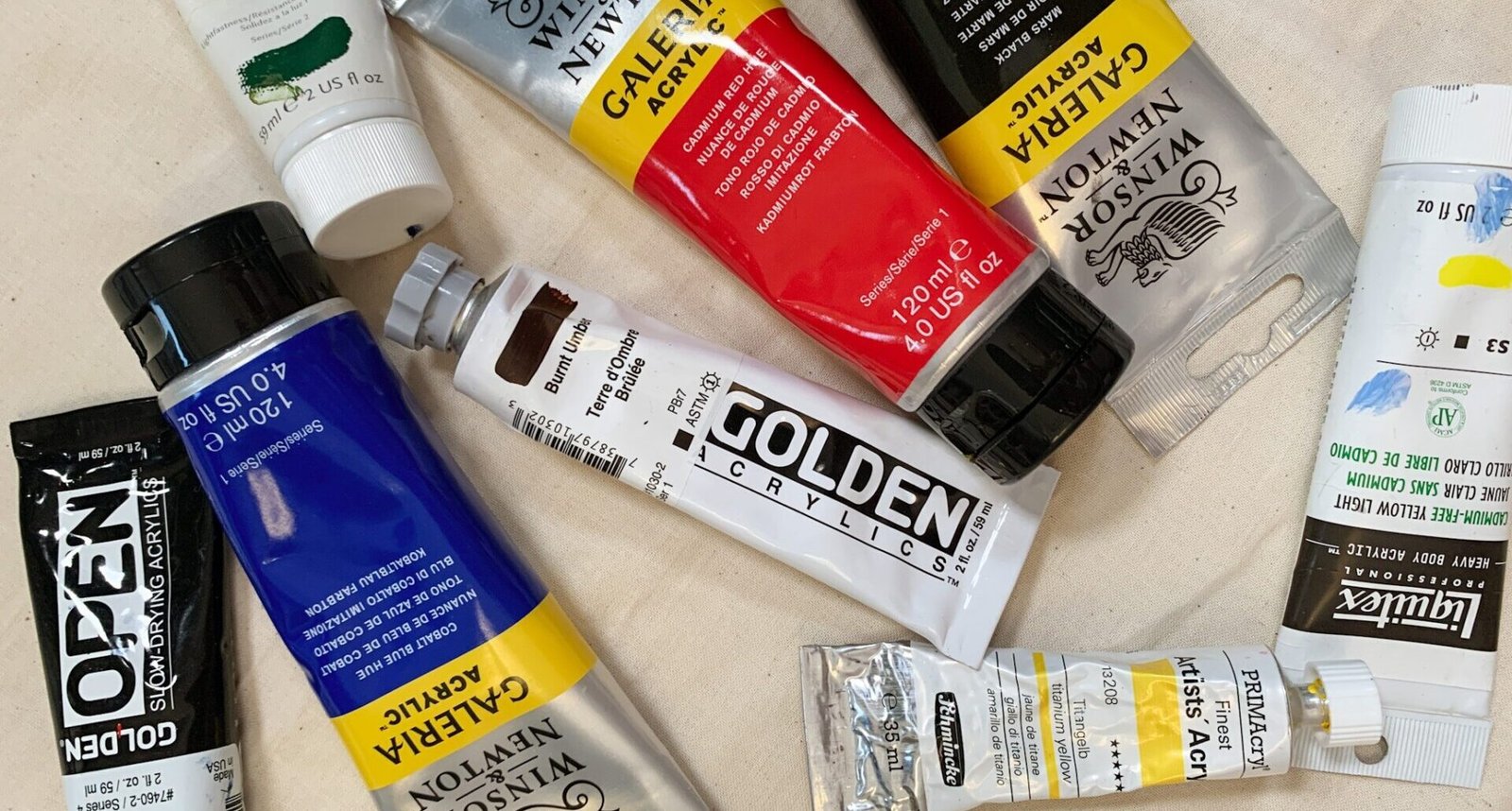If you’re looking to dive into the world of acrylic painting, you’re in for an exciting journey. However, with so many choices available, selecting the right acrylic paints can be overwhelming, especially for beginners. In this guide, we will explore essential aspects to consider when choosing acrylic paints, ensuring that your artistic experience is enjoyable and fulfilling.
Understanding Acrylic Paints
Acrylic paints are water-based, known for their versatility, vibrant colours, and quick drying times. They can be easily cleaned with water, making them user-friendly for artists of all levels. Acrylics can also be diluted to achieve a watercolour effect or layered for a more opaque finish. Available in various consistencies—heavy body, soft body, and fluid—acrylic paints cater to different techniques and preferences.
Before selecting your paints, it’s essential to understand the basics of acrylics. This knowledge will help you make informed decisions that align with your artistic goals.
Five Aspects to Consider When Choosing Acrylic Paints
When selecting acrylic paints, there are five critical aspects to keep in mind. These factors will guide you in making the right choice for your artistic needs.
1. Ease of Use
- Consistency: It’s crucial to choose paints with the right balance—not too thick, not too thin. Look for a smooth, creamy consistency that allows for easy application.
- Blendability: Opt for acrylic paints that blend well. This feature is essential for creating smooth transitions and fine gradients, especially for beginners experimenting with different techniques.
- Opacity and Coverage: High-quality acrylic paints offer better opacity and coverage. Low-grade paints may require multiple layers to achieve the desired effect, while artist-grade paints provide richer pigmentation.
The first aspect to consider is the ease of use of the paints. Here are some key features to look for:
To test the consistency, squeeze the paint tube gently. Aim for a tube that is neither too easy nor too hard to squeeze, as this indicates a good balance for mixing and application.
2. Colour Range
While a wide range of colours can be appealing, beginners should consider the benefits of a focused colour palette. Limiting your selection to a few essential colours can streamline your learning process. Start with a basic palette of primary colours: red, blue, yellow, along with white and black. If you wish to expand, consider adding secondary colours like orange, violet, and green.
With just a handful of colours, you can master the fundamentals of colour mixing and develop a solid understanding of how different hues interact.
3. Versatility
Acrylic paints are generally versatile and can be used on various surfaces, including canvas, paper, wood, and fabric. However, some specialty acrylic paints may have limitations based on their formulations.
For instance, paints designed for fabric may not adhere well to non-porous surfaces like glass or metal. Similarly, outdoor acrylics may be tailored for materials such as concrete or stone. Always read the label or product description to understand the intended use and recommended surfaces for any specific paint.
4. Price
While you don’t need to invest heavily in art supplies to start painting, it’s essential to find paints that offer good value. Consider factors such as pigment quality, colour intensity, and overall performance.
You can discover affordable options at local stationery stores, but be cautious with budget brands, as they may not meet your quality expectations. A basic artist’s primary set, containing six to eight colours, typically ranges from €15 to €20, depending on the brand.
Recommended Brands
Here are some brands that offer starter sets suitable for beginners:
- Liquitex Basics: Known for affordability, their starter set costs around €15 to €20.
- Royal Talens Amsterdam: Their standard acrylic series primary set is priced around €20 to €25.
- Winsor & Newton Galleria Acrylics: Offered for €25 to €30.
- Lukas Krill Studio: A basic set of six tubes is available for around €25.
- Schmincke Academy Acrylics: Priced approximately €30 to €35.
- Golden Heavy Body Acrylics: A premium option with a set costing between €50 to €60, including additional glazing mediums.
5. Lightfastness
Lightfastness refers to how well a paint retains its colour when exposed to light over time. While this may not be a primary concern for beginners focused on experimentation, it is essential for preserving the vibrancy of your artwork in the long run.
As you grow in your artistic journey, consider selecting paints with good lightfastness to ensure your creations maintain their beauty for years to come.
Additional Tips for Beginners
As you embark on your acrylic painting journey, here are some extra tips to enhance your experience:
- Start Simple: Begin with a few basic colours and gradually add more as you become comfortable.
- Experiment: Don’t hesitate to explore different paints, colours, and techniques. The process of discovery is part of the fun!
- Try Different Brushes: Brushes come in various shapes and sizes, each creating unique strokes and textures. Experimenting with different brushes can add variety to your artwork.
- Practice Regularly: The more you paint, the more you’ll improve. Remember, mistakes are merely happy accidents that contribute to your growth as an artist.
Conclusion
Choosing the right acrylic paints as a beginner can set the foundation for a fulfilling artistic journey. By considering factors such as ease of use, colour range, versatility, price, and lightfastness, you can make informed decisions that enhance your painting experience.
As you explore the world of acrylics, remember to enjoy the process of creation. With practice and experimentation, your skills will grow, allowing you to express your artistic vision. Happy painting!

